THE GUILD ART JOURNAL
Photography Third Issue
In this issue we shall take a look at Photography, both - as a subject and as a tool. From its advent in the nineteenth century it has moved ahead from its elementary – evidence producing role, such that, given the current scenario, it becomes necessary to see the place it shares with various other modes of artistic expression. Apart from the technicalities of the appropriate lights, focus, aperture, shutter speed, it is interesting to see how photographers employ it while shuttling between, its basic role as a tool of documentation, to that of a camera with a conscience.
September 09
Vrushali Dhage
Contributing Editor
A Subject Revisited
Mohd. Ahmad Sabih on Sunil Gupta
A Subject Revisited We move around in a world proliferated by the most rhetorical images that beseech us to feel tempted, look desirable, aspire, sympathize, feel nostalgic, and what not. It is a world that is ‘visible’ to us and evidenced by its very representation. To be witness to an event, and to be seen as being witness to an event, all constitute the ‘present’. From cameras on cell phones to social networking websites, we have reached a point where our images determine our presence and whereabouts in the world. So, what would it be about the arc of any individual artistic career today that may interest us, particularly so, in the domain of photography? Moreover, what role after all does the ‘author’ play any more in this prolific accumulation of images? Maybe the question might have more pertinence than mere copyright issues if that artistic career is the subject, the object, and the narrative of a certain body of photographic works. It is not the teleology of Sunil Gupta’s career that moves me as much as how the photographer, his subject-matter (himself many-a-times), and the narrative (i.e. his career) collapse into one and the same entity, the photographs. It is, therefore, not even important whether Sunil Gupta had clicked the photographs himself, or if it is him who has been clicked in them. In his earlier series such as Tresspass 2 (1990s), Gupta brought into a single frame, incongruous juxtapositions of himself on the one hand, and ‘popular’ images or old family pictures on the other. He employed the technique of appropriation to make the use of sources almost immediately accessible and recognizable in what they don’t show. He had therefore inverted the process of appropriation, incorporating the unlikely syncopating, re-contextualizing, and slowing down of discernibility to the point of estranging notions of the popular. This strategy created space for thinking about ‘other’ identities through the In Wish You Were Here, however, the series considers the difficulty of documenting knowledge of anyone, and the dependence on the inanimate and mute narratives of pictures (albums, autographs), the tableaux, as well as the anecdotal. But even here, something eludes vision and documentation, and this is not to say that some absence appears in these pictures. Wish you were here is a monographic book of and by Sunil Gupta, that at first glance appears to be just a chronicle of a life lived. Page after page, one finds documented important moments in Gupta’s life, memorable locations, and just about everyone Gupta may have felt a sense of attachment with. Sunil Gupta’s photographs have rarely amplified the elusiveness of transitory urban life, of cities pulsing with information. On the contrary, he brings to view human networks more complex than the city’s obscured veins of infrastructure, of individual navigating systems within systems. As a narrative, its structure plays with the fragmentary nature of the city, where any corner, any square, any home holds multitudes of stories, looming in an out of view. Though a Memoir, Sunil’s move casts away the question of veracity in these documentary images, since the document requires its maker to remain outside the document, be it spatially or temporally. Sunil Gupta takes us into a territory we are already very familiar with, i.e., family album photographs, but questions where the maker of any document is situated. The tactic, if we can call it one, is unlike the deliberate and scrupulous manipulation of documents to weave a more complex narrative as in the ‘Re-take of Amrita’ series by Vivan Sundaram. There is also a refrain from citation and irony as in the works by Pushpamala. Though the mode of testimony has burgeoned in a huge way in contemporary Indian art, particularly video art, Gupta initiates a commentary from outside and from within his photographs at the same time, and whether it is his voice of today, or of yesteryears; they become indiscernible. The document, its subject, and its maker are in the same fold. We come across photographs that look similar quite often, but the same can not be said for what this series achieves in unfolding. Mohd. Ahmad Sabih has been involved in doing research and archiving with art-critics, artists and auction houses. His area of interest is in investigating the infrastructure and the institutions of art in the county. [1] Gautam Bhan, Wish You Were Here: Memories of a Gay Life, Sunil Gupta, Yoda Press New Delhi, 2008. Untitled, from the series ‘Tresspass 2’, 1993 Kaushiki, from the series ‘Mr Malhotra’s Party’, 2007 Picture Courtesy : Sunil Gupta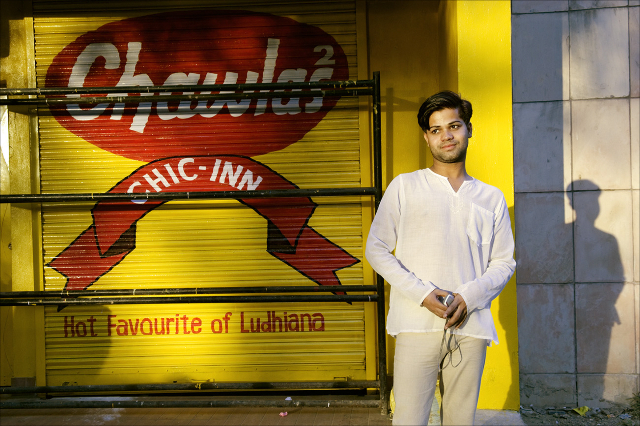

presence of his own body. There are a range of approaches to the photographs taken as well, mostly portraits: some are imbued with deep intimacy, some dandy, many that remind you of family albums, tourist photographs, and still others taken on the street. None of them, however, compromise on being stylistically expressive. Yet, there is a haunting nature to this autobiograph
There are a range of approaches to the photographs taken as well, mostly portraits: some are imbued with deep intimacy, some dandy, many that remind you of family albums, tourist photographs, and still others taken on the street. None of them, however, compromise on being stylistically expressive. Yet, there is a haunting nature to this autobiograph![]() ical work. As AIDS shadows nearly all of his current work, he deftly traverses the muter impasses of desires swirling around and within the gay community.
ical work. As AIDS shadows nearly all of his current work, he deftly traverses the muter impasses of desires swirling around and within the gay community.![]()
![]() Gupta’s concerns are clearly away from a formal investigation of the photographic apparatuses, and more towards the fluid relationships between himself and others. What is most compelling to me is that in the Wish You Were Here series, there are no others, though most of them are ‘others’ including Sunil Gupta. His work is autobiographical, precisely in defining himself through his encounters with other people. This precise and ambivalent move splinters the narrative by dispersing the subject (i.e., Sunil) into many other personae. It is a subjectivity inscribed, if not subsumed, by photographic media. This is remarkably distinct from the ever so talked about ‘othering’ that photography has always perpetrated for over a century. Rather, the visible is held with empathy, a sense familiarity and warmth. The self finds itself in others.
Gupta’s concerns are clearly away from a formal investigation of the photographic apparatuses, and more towards the fluid relationships between himself and others. What is most compelling to me is that in the Wish You Were Here series, there are no others, though most of them are ‘others’ including Sunil Gupta. His work is autobiographical, precisely in defining himself through his encounters with other people. This precise and ambivalent move splinters the narrative by dispersing the subject (i.e., Sunil) into many other personae. It is a subjectivity inscribed, if not subsumed, by photographic media. This is remarkably distinct from the ever so talked about ‘othering’ that photography has always perpetrated for over a century. Rather, the visible is held with empathy, a sense familiarity and warmth. The self finds itself in others.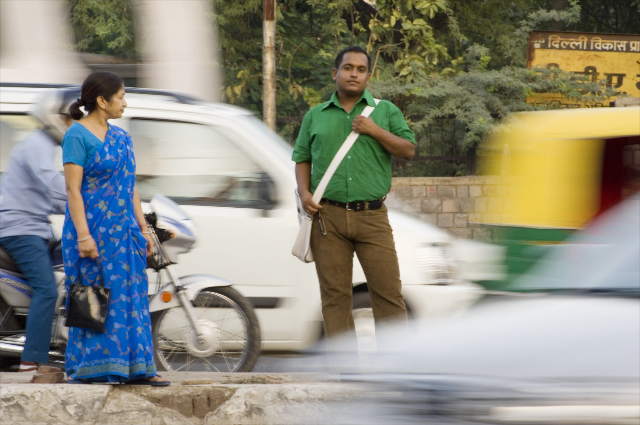
This, I would think, makes up for a photographic ‘excess’ very distinct from the quotidian excess that surrounds us with the ubiquity of media. It is not as simple as the post-modern turn that Baudrillard traces with the explosion of copies with no original. The space Gupta opens is that of an incremental excess, an accretion onto that which is already present. In due course, what begins as the main incident becomes the outer limit of frame and vice-versa. The margin turns into scene with the unpredictable intersection of chance and attention, which takes us beyond that ‘decisive moment’ when the photograph was taken. The works are in the end about the “communities, acts, thoughts, body parts, practices and desires that are a part of our lives but absent from our visual imaginations, our languages and our politics.”[1] 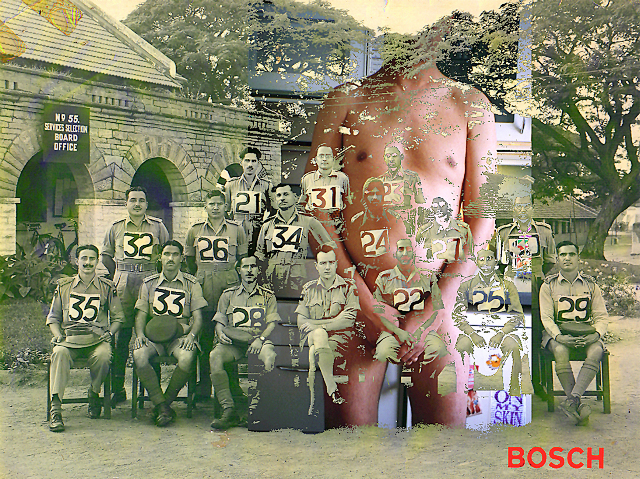
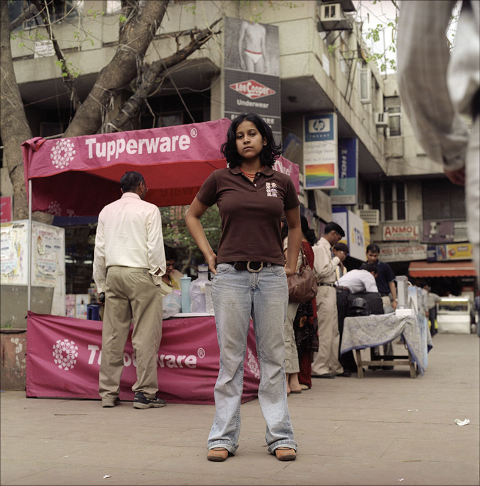
An oblique path of intervention
Vrushali Dhage on Rafeeq Ellias
An oblique path of intervention It is not just about a place (or many places): a city, a village, a sub-city; its scapes, its structure / setup, places, buildings, people, – of prominence and those ignored, of their individual and collective histories. As one pans across the works of Rafeeq Ellias it is evident that to Ellias it’s all been a matter of constant exploration – be it of different lands or people across the globe, or that of understanding history or the current times - from a larger macro view to a highly intimate, individual / personal perspective. And in doing this Ellias constantly shuttles between many worlds, playing many roles. Once he was thoroughly into the glamorous fashion, advertising world, which he terms as “the business of ideas”, and over the time started exploring various spheres. Ellias believes that it was his travel that introduced him to another world, a raw world, which gave him a greater understanding of humans – their concerns and relations to a larger system which they were an entity / element of, and a sense of understanding politics through an analytical and critical approach. He becomes a part of these worlds / individuals, which / whom he captures, and blends well with them, and at the same time abstains from diluting his personal identity. With this he places himself at a vantage point, and undertakes an oblique path of intervention; as he captures terrains, events, and many other physically / visually present elements, especially individuals. To Ellias portraits remain his particular point of interest. The issues that tail are those of how, is / are the individual(s) being portrayed; as the works introduces the person(s) still in time to the viewer(s). From the chic models with a ceramic glaze complexion, the graceful ballerinas with their nearly el Further, there is evidently a constant oscillation between the outer viewer’s world and the inner, intimate, personal world of the individual being photographed. To the prior it is the character revelation and comprehension, and for the latter the retention of the personal / self. From the viewers end, even while saying that the viewer is not well equipped to employ a judgemental, subjective yardstick, it is also true that these photographs / portraits act like a window into the “other”, the non-physical aspect of the individual who is being captured, leaving it open for interpretation. And part of this ambiguity relates / crops from what / who is being depicted and (how) the manner of depiction - of what needs to be shown and what to be eclipsed. Such that there is a strange interplay between the – expressed, exposed, depicted, the visible and the other side. There is a sense of - illusionary reality, thought this might sound contradictory, but contradiction is an inherent character of a photograph or a portrait. It leaves it open to the viewer to interpret it in multiple ways. It is not about the pose, the lighting, the background or many such technical elements but it is the character which makes the reading possible. It is like a text loaded with meaning, it is replete with meaning and meaninglessness. Its open-endedness itself makes it worth a discourse. Its layers need to be viewed rather explored, in order to read it. It is left to the photographer to capture this intangible aspect, thereby erasing the need for a (descriptive) caption. Ellias’s portraits of the famous personalities or the lady seated in the Pushkin Museum, Moscow (which provides a visual frame within a frame), all evidently possess a certain character which is ineffaceable. The figures remain central, not because of what they represent but because of what they are; if the figures are seen in relation to wider social and cultural questions, the images / persons remain equally independent and true to themselves. The portrait photograph is, then, a site of complex series of interactions – aesthetic, cultural, ideological, sociological, and psychological; such that it provides a description of an individual and also the inscription of his / her social identity. As Ellias associates more and more with public spaces, he raises discomforting questions regarding our understanding of - the majority and the minority, the human and the programmed, of power and exploitation, of the humane / logical and the irrational; all which time and again are evaded / dodged by convenience. The documentary is not about creating an emotionally charged work, which would eventually lead to sympathy pouring. It highlights the political undertones, and points at the urgent need of questioning and understanding the notions of rationality, those of a minority, the subaltern, which invariably draws in their insecurities with which one learns to live. It is about sensitising and understanding the role of - power, strengths and its abuse. The need is to understand the shameful acts born out of mere suspicion and segregations. It wouldn’t be erroneous to say that the highly structured, mundane repetitiveness of life nearly blunts, stales and blinkers ones vision, it ‘automatises’ of our perceptions of and responses to what is seen, sensed, or presented to us in our daily life; be it about individuals, or some events or happenings; such that a slight diversion – an excess or absence of “something”, of the entities having a taken for granted existence, or a look at them from a different lens nearly alters the picture diametrically. It is here that Ellias’s identity of a third person placed within the same world plays an instrumental role. Vrushali Dhage Reference : Picture Courtesy : Rafeeq Ellias 
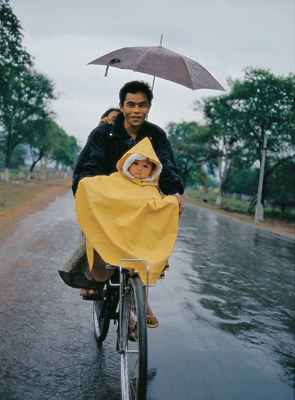 astic bodies, to a Kashmiri woman cooking at home; from the two Palestinians in a tea house to a child being driven back home by his parents from school, each of them are comfortably nested in their own worlds. Ellias certainly does not possess an approach of an outsider or a traveller; rather he senses the need to be a part of the world of those whom he sees so closely around him; gradually he stages a comfort zone and nearly shares the same vein.
astic bodies, to a Kashmiri woman cooking at home; from the two Palestinians in a tea house to a child being driven back home by his parents from school, each of them are comfortably nested in their own worlds. Ellias certainly does not possess an approach of an outsider or a traveller; rather he senses the need to be a part of the world of those whom he sees so closely around him; gradually he stages a comfort zone and nearly shares the same vein.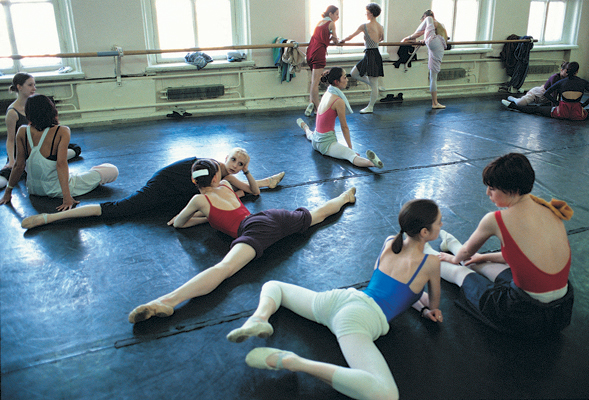 Ellias carried his photographic practice ahead with his documentary “The Legend of Fat Mama”, based on the Indian Chinese community which has been strongly woven in to the cultural fabric of Kolkata. This community has long existed – in their own Chinatown; which I would call a city within a city – sub (set of a) city. Sharing multiple identities this community is known for their food and celebration. Like millions of other residents, this community too witnessed the slow transformation of colonial Calcutta to the post colonial Kolkata. But they had witnesses something even more, which remains shrouded in deep recesses of their minds. The Indo-China war of 1962 is one such milestone, which in the history of our nation needs to be pondered on. The war proved to be a turning point for the Indian Chinese. The documentary provides an insight into their lives, as those who were victimised by the terrible cross fire - some who lived and experienced those days charged with a strong feeling of suspicion and others who read about it in history books. Some migrated to different countries while some stayed back to start their living from the scratch, battling with their insecurities, and, economic and social hurdles. It is like visualising history as a series of events and discrete images which speak of the complexities of human experience, disaster and its after-effects. And yet in the backdrop of the dark happening there are fond memories too, which act as relieving points.
Ellias carried his photographic practice ahead with his documentary “The Legend of Fat Mama”, based on the Indian Chinese community which has been strongly woven in to the cultural fabric of Kolkata. This community has long existed – in their own Chinatown; which I would call a city within a city – sub (set of a) city. Sharing multiple identities this community is known for their food and celebration. Like millions of other residents, this community too witnessed the slow transformation of colonial Calcutta to the post colonial Kolkata. But they had witnesses something even more, which remains shrouded in deep recesses of their minds. The Indo-China war of 1962 is one such milestone, which in the history of our nation needs to be pondered on. The war proved to be a turning point for the Indian Chinese. The documentary provides an insight into their lives, as those who were victimised by the terrible cross fire - some who lived and experienced those days charged with a strong feeling of suspicion and others who read about it in history books. Some migrated to different countries while some stayed back to start their living from the scratch, battling with their insecurities, and, economic and social hurdles. It is like visualising history as a series of events and discrete images which speak of the complexities of human experience, disaster and its after-effects. And yet in the backdrop of the dark happening there are fond memories too, which act as relieving points.
Graham Clarke, The Photograph, Oxford University Press USA, 1997 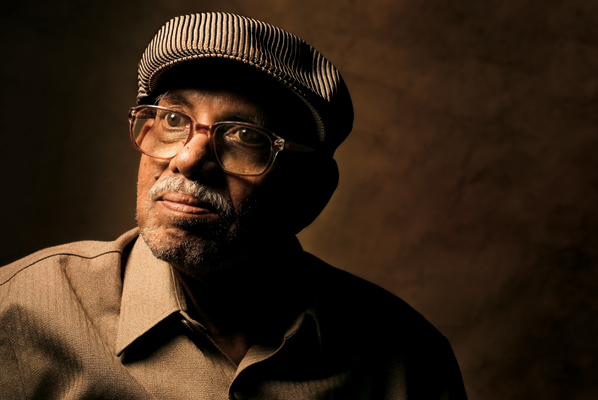
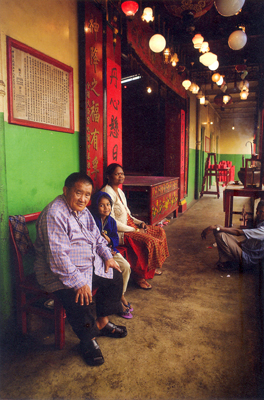

A Momentary lapse of the familiar...
Baiju Parthan on Tejal Shah
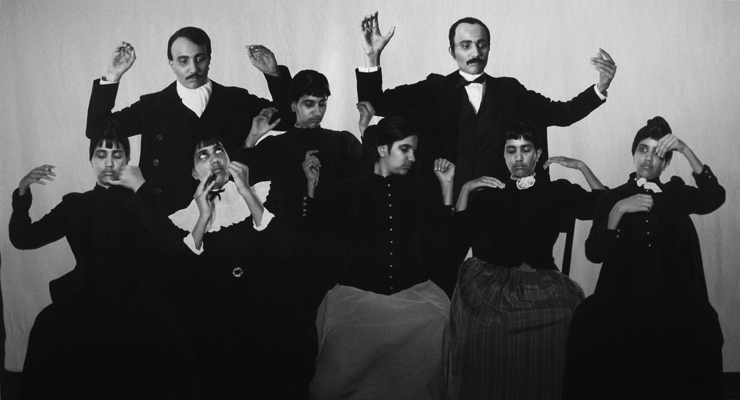
Group Catalepsy or The Ship of Fools, 2008
A Momentary lapse of the familiar... As an artist confronting and exploring photography as the chosen medium of expression, Tejal seem to have bridged the inherent immediacy of the photograph with the qualitatively different contiguity and immediacy offered by performance art. In her recent project Hysteria: Iconography from the Salpetrier Series comprising of black & white photographs, she employs de-familiarization as a strategy and tool to unravel attributes that are without doubt liminal to photography as a medium. Derived from the book 'Invention of Hysteria': by French philosopher Georges Didi-Huberman, this suite of works explore Tejals's prime concern, of the body as a gendered and sexualized entity and the marginalization of the transgendered in the historical narrative of social reality. The term “de-familiarization” was first coined in 1917 by Viktor Shklovsky , Russian formalist and literary critic as a device or strategy to impose the poetic upon the practical by interrupting the linear unhindered understanding of the commonplace. Essentially, at the core of de-familiarization is the idea that poetic language and imagery need to be fundamentally different from the language we use on an everyday basis and has to be framed in such a way as to prevent the habitual association of images and words . In simple terms the technique or requirement is to make objects ‘unfamiliar’ in order to increase the length of perceptual engagement from the viewer or reader, because the process of perception is an aesthetic end in itself and must be prolonged. As against her past work which has more or less relied on the direct and instantaneous dissemination of sense and meaning, Hysteria: Iconography from the Salpetrier Series as a project is a departure in its skillful use of de-familiarization in order to withhold immediate gratification and extend the length and duration of perceptual engagement wherein there is a gradual and steady unraveling of nuances. The images take off from the original illustrations in Georges Didi-Huberman's book to explore the subtexts and the history embedded within the archival photographic illustrations and explores the nexus between the patient or model, doctor, and the assertion of science as authority through staged enactment of events and episodes. Tejal's photographic enactments or performances of these same situations are brought about mostly by herself playing multiple roles, but in a few frames we also have Paris based dancer and choreographer Marion Perrin who collaborated in the project. The multiple selves that populate some of the frames in the suit seem to have been played out upon the virtual stage through the agency of an image processor rather than the traditional device of multiple exposures, in-camera or otherwise. It is this virtual staging and arranging which makes these works edge themselves out of the framework of photography and stake claim to a patently liminal space somewhere between the realm of performance and digital image manipulation. The strength of performance art resides in its immediacy, which makes it antithetical to the technologies of reproduction and representation where dynamics of the technology articulates not immediacy but fossilization. In fact there is well defined skepticism regarding the role of the photograph in the documentation of performance art. Allan Kaprow, well known for orchestrating performance events in the 1960s, felt that it brought an unwanted dimension of the arrested spectacle to a fluid evanescent event. So it is quite interesting to see technically incompatible genres colliding and resolving in a kind of synthetic cross border merger in this suit of photographs. In many ways the works in this suit also suggest the departure from modernist purist positions or vestiges of them which still linger on in the field of black & white photography. Black and white photography carries with it an aura of the factual and the unadulterated, which the purists have always claimed and defended as mark of real photography. But from the position of the artist who aims to push the envelope and to re-signify existing and overused habitual conceptual and aesthetic positions, the purist's position would equate to the extension of the practical and the commonplace. Thus with the intentional displacement of time and space, Tejal defines a non-ordinary space through her black & white photography — a space that depends not on facts but on the viewer to make it come alive, very much in the line of performance art. Baiju Parthan’s art practice revolves around information technology and its impact on perception and meaning generation. The artist lives and works in Mumbai.
| |||
Photophobic Hysteric, 2008 | Lethargy-Resulting from the Abrupt Suppression of Light, 2008 | ||
| |||
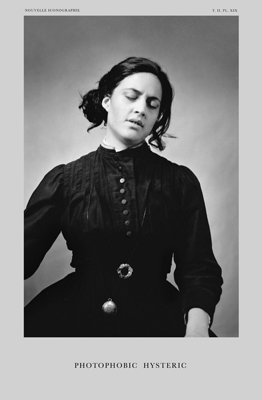
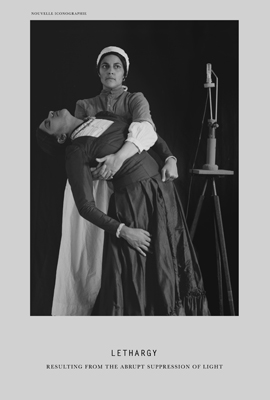
hi nice article about business and art good thinking. i want to share some other article about resolving art versus business.check it out : http://www.insidermusicbusiness.com/blog/resolving-art-versus-business/
ReplyDelete